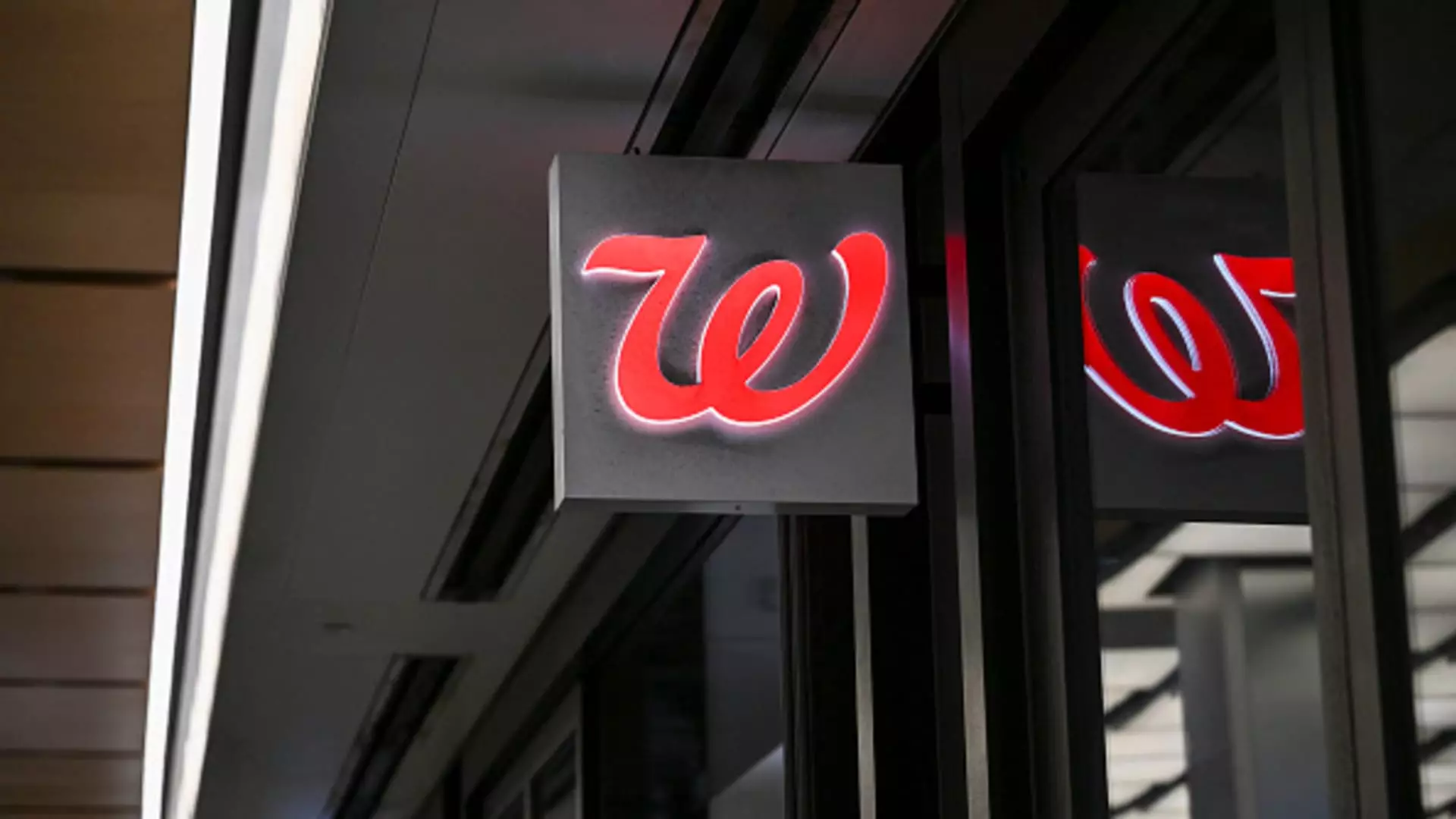Walgreens, one of America’s longstanding retail pharmacy brands, has recently embarked on a seismic shift that reflects both a deep-rooted complexity in its operations and a critical junction in its existence. As the company prepares to go private through a staggering $10 billion acquisition by Sycamore Partners, a veil of uncertainty cloaks its future. This transition is not merely a strategic maneuver; it’s a desperate attempt to recalibrate a business that has languished under pressure from various fronts, including competitive forces that threaten its market relevance.
Since its inception in 1927, Walgreens has navigated through economic highs and lows, yet now faces the daunting task of responding to an ever-changing retail landscape. The withdrawal of its fiscal 2025 guidance signals an acute realization of its vulnerabilities as it grapples with pharmacy reimbursement challenges and an evolving consumer base. The decision to cease its long tenure as a publicly traded entity underscores the gravity of its position, reflecting a company at the crossroads of reinvention and possible obsolescence.
Financial Gains? Or Just a Mirage?
Despite a recent report that showcased earnings and revenue surpassing Wall Street expectations, the truth behind Walgreens’ financial façade is less rosy than it appears. While the reported revenue of $38.59 billion does represent a 4.1% increase year-over-year, the bottom line reveals a troubling net loss of $2.85 billion. The contrast between these figures raises questions about the genuine health of the business. Is this the result of astute cost management, or simply a last-ditch effort to mask deeper, systemic failures within the company?
CEO Tim Wentworth’s comments on the quarterly performance highlighted what he termed “disciplined cost management,” yet this effort arguably underscores the company’s fragile state rather than its adaptive prowess. The incremental improvements in U.S. Healthcare must be viewed with skepticism, especially when juxtaposed against the backdrop of increased expenditure due to legal settlements relating to opioid medications. Such settlements not only strain operating cash flow but also paint a picture of a company grappling with its moral obligations while simultaneously trying to protect its financial interests.
The Cost of a Troubled Legacy
Walgreens’ journey is riddled with pitfalls, including aggressive competition from CVS, grocery chains, and even tech giants like Amazon. As the company faces declining foot traffic and rising operational costs, it seems trapped in a cycle where legacy systems and models no longer suffice. The decision to shutter stores—a pattern mirrored across the retail sector—is an acknowledgment of these external pressures, demonstrating a lack of foresight in terms of evolving consumer preferences.
Moreover, Walgreens’ foray into the healthcare sector illustrates the paradox of ambition and failure. Attempts to integrate health services into its offerings, presumably intended to bolster its relevance, have instead resulted in massive write-offs and losses tied to investments such as VillageMD. The dilution of focus, compounded by legal pressures and regulatory scrutiny, highlights an unsettling trend: a company trying to be everything to everyone while losing sight of its core competency.
Investments That Can’t Save the Day
While Walgreens recently garnered some profit by divesting certain shares in Cencora and benefiting from BrightSpring investments, these gains feel ephemeral amid substantial losses. This reliance on piecemeal wins instead of strategic growth leaves much to be desired in terms of future viability. The soundbite of a billion-dollar profit may dazzle investors momentarily, but it lacks the sustainability needed to rally support for future challenges.
Such bewildering shifts in fortune lead to broader implications for stakeholders. Customers and employees alike may feel the instability of a company attempting to redefine itself under relentless pressure, thereby impacting brand loyalty and workforce morale. As Walgreens prepares for a future devoid of public oversight, the questions remain: will it be a phoenix rising from the ashes or simply another relic of retail history?
In these tumultuous times, Walgreens stands as a cautionary tale of mismanaged legacy, sparing not just its shareholders but also public trust in a brand that once symbolized reliability in healthcare and retail. As the firm navigates this complicated landscape, the hope for a turnaround seems drenched in a haze of uncertainty.


Leave a Reply